How to choose a dining table, and our favourite dining tables in stock UK 2022 from Made, Argos, Nkuku
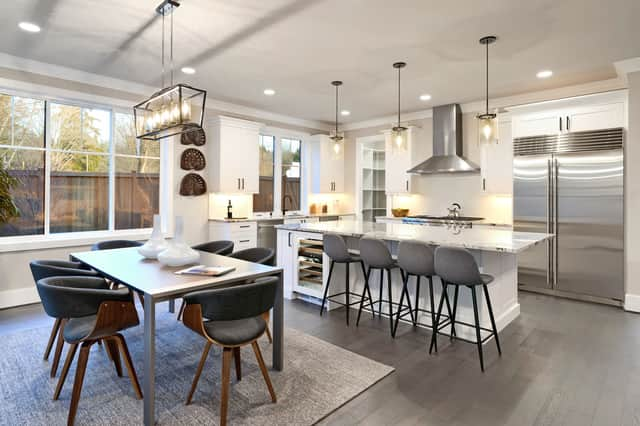

This article contains affiliate links. We may earn a small commission on items purchased through this article, but that does not affect our editorial judgement.
The humble dining table can - and often does - serve as the hub of your home. Far from simply a place to eat, they frequently double as work spaces for home office work or teenagers studying; a spot to socialise with friends and family; the scene of endless board games and jigsaws; a stable surface for arts, crafts, and all manner of hobby.
It’s worth, then, taking the time to consider what you want from a dining table ahead of buying one - a sound investment can serve you for years to come. Here’s what to consider ahead of buying.
Try and get the biggest table your space can accommodate
You may think you have little reason for a large dining table - reasoning that you don’t use it too much, or there’s a limited number of you living there. But if you’ve a space for a dining table, you’d do well to get the biggest table that space can accommodate.
This will mean you have room for entertaining, if it comes up, and the room won’t look sad or empty with too much space around it. You’ll also be surprised by how useful dining room table space is.
What do we mean by the ‘biggest table that space can accommodate?’
You need to leave a metre of clearance space
That means approximately a metre of space (3 feet, if you prefer) open behind the chairs, so that you can easily get up and down from the table.
Round tables are great if you live in a smaller space
Of course, we don’t all necessarily have a dedicated dining room, let alone a large one at that. If your dining space is in the kitchen or an open-plan living area, consider a round table - they have smaller footprints than rectangular tables, and allow a number of people to sit around them. If it’s good enough for King Arthur....
What material you choose depends on your lifestyle
Tables are produced in a range of materials - which one you chose will, of course, be driven by aesthetic, but there are a few other key considerations for each time.
Wood: wooden tables are durable and easy to repair when scratched. Popular, reasonably price wood options are pine, acacia, mango and teak.
Stone: stone-topped tables (such as marble) are very durable, but they are porous, which makes them prone to absorbing stains (if you will with a spiller). They’re also often quite heavy.
Glass: glass-top tables are often recommended for darker spaces, as they connote openness and space. The downside is that they scratch very easily, and will show up every fingerprint - so they’re best for clean, conscientious people.
Plastics and laminates: if you’re shopping on a budget, buying a table with a plastic or laminate surface will be inexpensive. They’re also easy to clean and maintain. The major downside is that people can perceive them as looking ‘cheap’.
Metallic accents pair with nearly everything
If your table has metallic legs, struts or accents, it will help your dining table tie into your surroundings. Gold, silver, iron and brass are striking, good looking, and match most colour schemes.
Our favourite dining tables now in stock
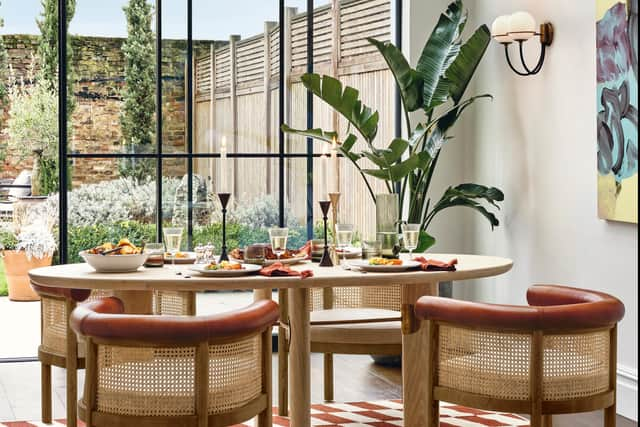

Dimensions: H75 x W200 x D100cmFrame: Oak, Oak veneer & Brass
Why we love it: It’s elegant without being gauche. The gold-tone brass frame has an opulence to it, but you’re not straying into Marie Antoinette territory.
The edges are rounded and smooth - great if you want to ensure everyone can enjoy conversation over dinner. It’d be perfect for a light, airy dining room or - if you’re lucky indeed - a glass conservatory, for a delightful breakfast.
It’s pictured here with the Jensen Dining chair.
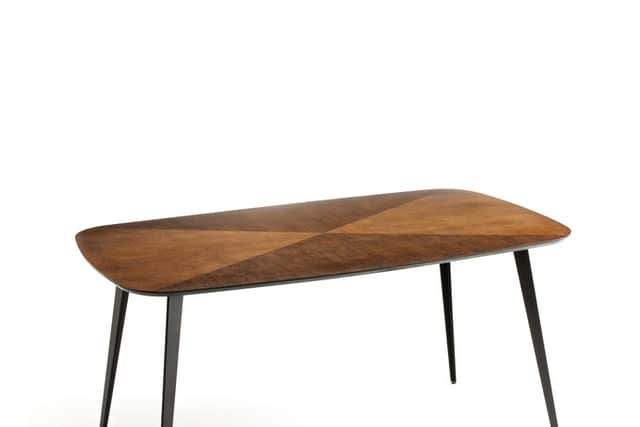

Dimensions: Length: 150cm x Height: 75cm x Depth: 90cm Frame: MDF top with rounded corners in walnut marquetry
Why we love it: This 50s-inspired table is going to stay perennially stylish, and is large enough to sit 6, but - impressively - is still light enough to move with ease if you’re looking to redecorate or organise your dining room.
It’s the work of about 30 minutes to assemble too - a stress-free experience.


Dimensions: W180 x D90 x H78cm Frame: Solid European oak
Why we love it: Versatile and stylish, the Salisbury oak dining table could suit many interior looks – from raw and industrial, to traditional and rustic, to relaxed yet elegant.
With a natural oiled finish that show of individual knots, grains and splits, this is a durable, sturdy table - one that could last generations if looked after.
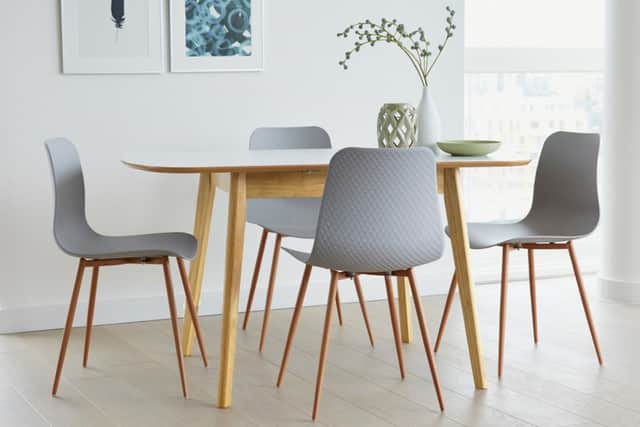

Dimensions: L.106-136cm x W.80 x H.75cm Frame: Solid wooden frame with high pressure laminate table top
Why we love it: Because it’s ideal if you have a house full of smaller people prone to making messes. The table-top has anti-bacterial and anti-fungal properties and is scratch-resistant, so it’s designed to deal with mess and clatter.
It looks quietly chic and the table-top is extendable from a 4-seater to a 6-seater, so you can feed extra mouths as and when they drop by.
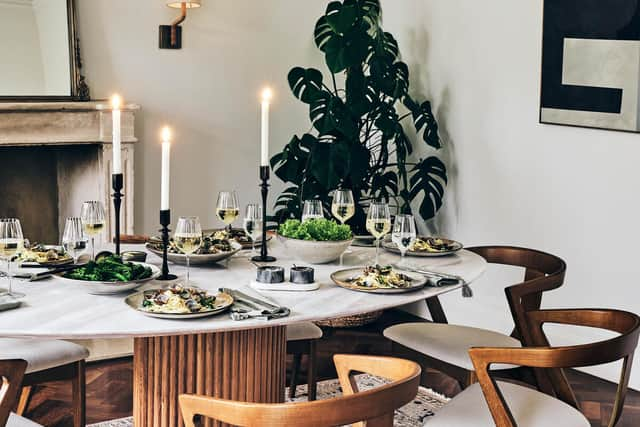

Dimensions: H76 x W200 x D120cm / H29.9 x W78.7 x D47.2"
Frame: Oak and Marble
Why we love it: Marble is timeless, durable, and easy to clean. With a solid-oak pillar base, this is an admittedly heavy dining set, one that you won’t necessarily be wanting to move at all.
But if you want a dining room where the table is a true focal point, for dinner parties that can last well into the night, this table is ideal - it’s oval shape allows a great deal of surface area for food and drinks and at least six chairs around it.
The clean lines of the white marble tabletop are bright and brilliant - this really is a looker, and one that will last for generations.
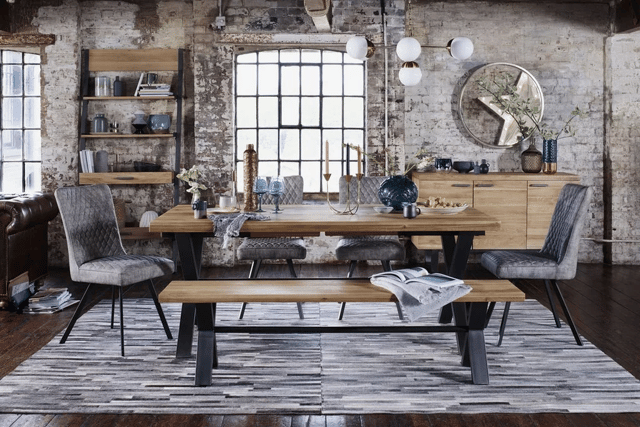

Dimensions: L 190cm x H 76cm x D 95cm Frame: Solid oak and oak veneer surfaces with powder-coated steel legs
Why we love it: It’s modern, practical, and looks good. This large dining table can be paired with either dining chairs, a large dining bench, or both - which allows for relaxed, bougie dining vibe.
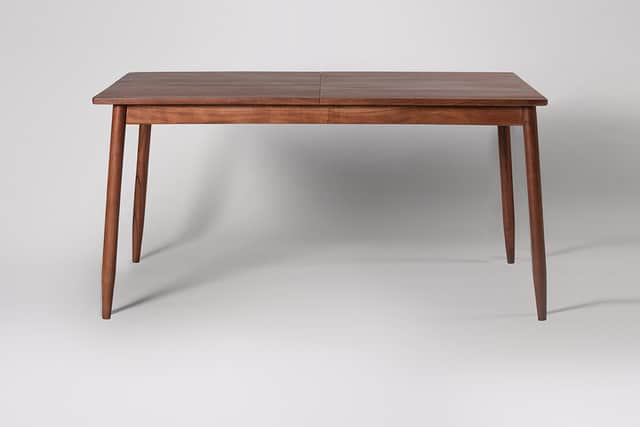

Dimensions: W: 150-190 cm D: 88 cm H: 75 cm Frame: acacia wood
Why we love it: Swoon are brilliant for curating timeless, reasonably priced, ethically sourced furniture, and this acacia wood table is no exception.
Although it’s inspired by a mid-century aesthetic, it will look good in almost any dining room, with its delicate design. Best yet, it’s extendable - from a 6-seater to an 8-seater - so you can easily set up for a dinner party if need be.
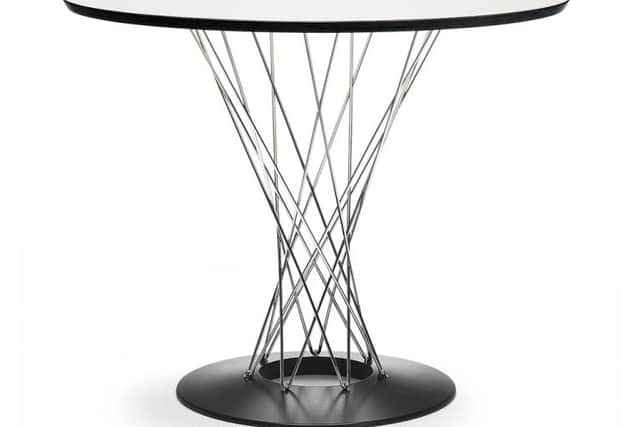

Dimensions: 72.5cm (h) x 121cm (Dia) Frame: Black lacquered cast iron base with chromed steel wire accents
Why we love it: Because it looks stunning. The Conran Shop is a market leading furniture firm for design, and this table is an excellent example.
Designed by Isamu Noguchi for the house of A. Conger Goodyear (president of New York’s Museum of Modern Art) it is elegant and functional. It aims to - in Noguchi’s conception - blur the lines between sculpture and furniture design.
The round table means it’d ideal for smaller spaces and allowing multiple people to sit comfortably around the same space.
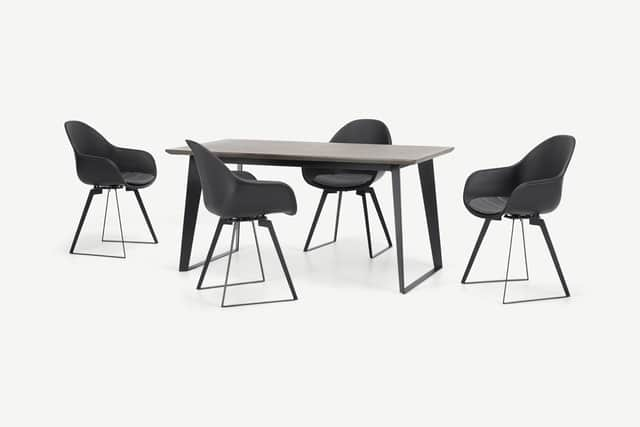

Dimensions:Height (cm) 76 x Width (cm) 160 x Depth (cm) 80Frame: Concrete Resin Top
Why we love it: Made designs often look considerably more expensive than they actually are, and this table set is no exception.
Stylish, it’ll look great in your dining room, with a sleek, minimalist feel. It’s easy to assemble, but be warned: it’s a heavy table, so you’ll need help moving it into position.
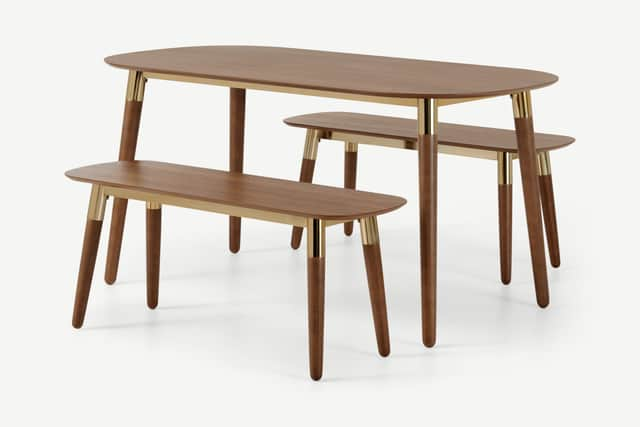

Dimensions: Height (cm) 75 x Width (cm) x151 x Depth (cm) 81 Frame: Engineered wood, oak veneer
Why we love it: Modern, classy - and perfect for family life. The table itself is a slim, smooth build with a lovely grain, while the slender legs and brass accents add visual interest and flair.
The light coloured woods means it won’t feel oppressive, particularly if you live in a darker house. This is spacious, well-built and stylish table at a fair price.
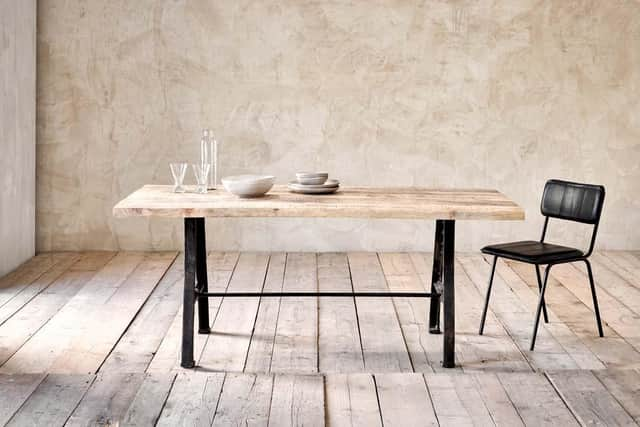

Dimensions: 76cm x 220cm x 90cm Frame: Natural Mango Wood
Why we love it: Nkuku utilises reclaimed or sustainably sourced wood to create furniture that’s both natural-looking and ecologically sound. They often use mango wood, which is harvested after mango trees stop bearing fruit, to ensure every aspect of the tree is utilised.
This table is typical of Nkuku design: a minimal, rustic look, with the natural wood sitting atop an industrial iron ‘a’ frame.
Easily sits 8 diners.
